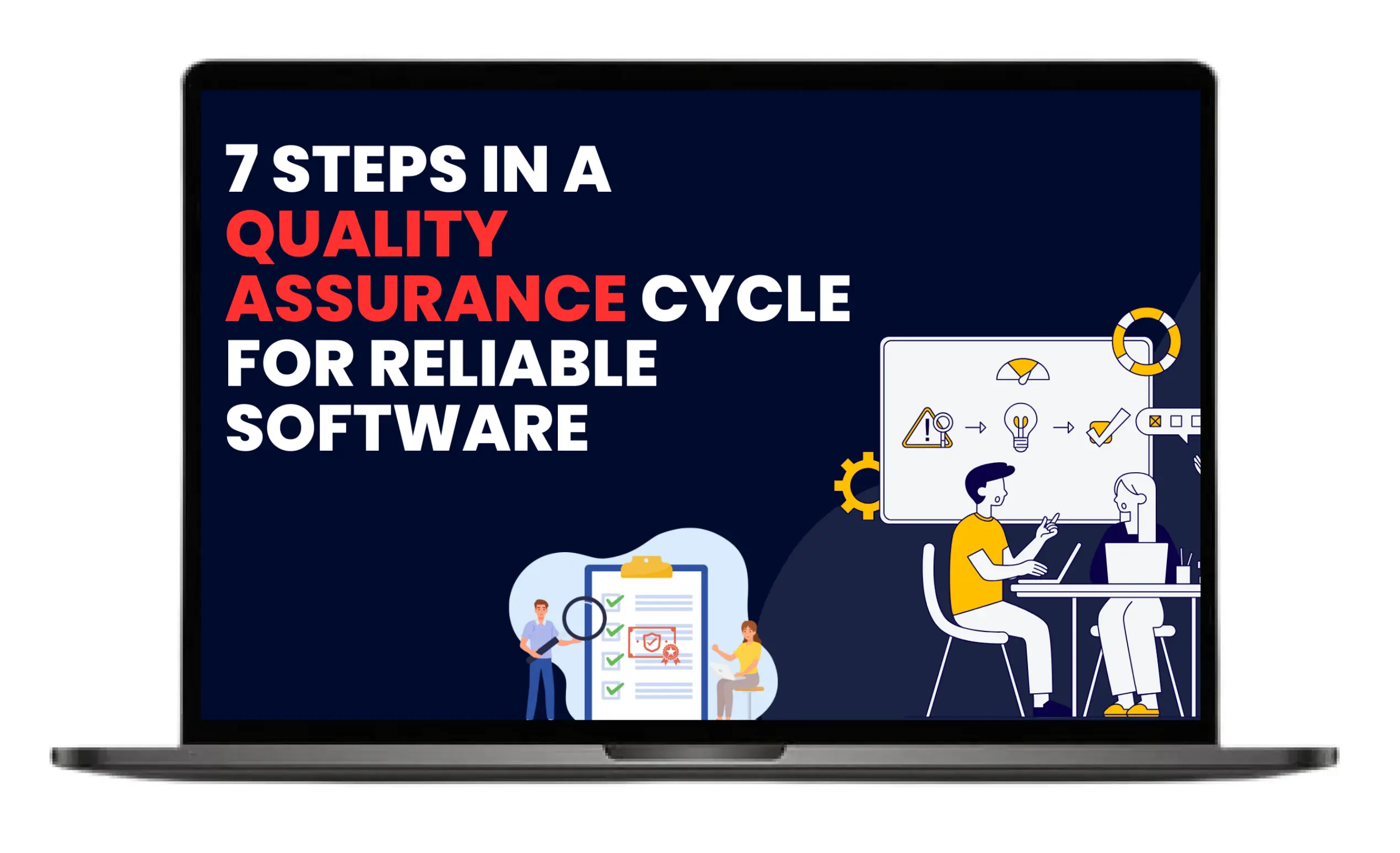
There are many projects that begin with a great start but end up losing the track. The success of great projects depend on efficient resource allocation. It means allocating the right resources at the right time for a right task. According to a 2021 report by Project Management Institute, poor resource allocation leads to failure of 23% of the projects.
We will help you understand what project management is, its importance, tools, and how you can master the art of resource allocation.
What is Resource Allocation in Project Management?
It is a process of identifying and allocating resources for different tasks. All organizations require resources to complete their operational and strategic tasks. This increases the importance of efficient resource allocation for a successful software project management. To understand this, first you need to know about resources.
What is a resource?
A resource is anything that assists you complete a project. This can include:
- Team members
- Tools or software
- Budget
- Ideas, intellectual property, or specific skill sets
- Project timelines
- Equipment
- Automated processes that reduce work
What are the Benefits of Resource allocation?
Effective resource allocation is a strategic approach that improves project management by efficient use of resources. This leads to timely completion of projects within given resources. Following are few benefits of resource allocation:
- It streamlines workflow by ensuring that every task aligns with project requirements.
- It helps in identifying the bottlenecks and mitigating them before they impact the project.
- It helps in resource optimization which aligns projects with client requirements.
The Step-by-Step Resource Allocation Process
Effective resource allocation is a repetitive process which follows a structured approach to ensure that true potential of every asset and individual is utilized. Following is a step by step guide to understand resource allocation process in project management:

Define Project Scope & Work Breakdown Structure (WBS)
The best start to any project is outlining its deliverables, goals, deadlines, and project scope. After this, use Work Break Structure (WBS) to divide the work in small deliverables. It provides an outline of what needs to be done by creating a visual hierarchy of all tasks and projects.
Identify Resource Requirements per Task
After outline each task in WBS, the next step is to determine the type of resource that suits every task. You have to determine which team requires which type of resource. Every team requires different types of resources. Allocating these resources appropriately is necessary for successful project management.
You can use resource planning templates to simplify this task. It ensures that every task gets proper resources.
Estimate Availability & Capacity
In this stage, capacity planning techniques can help you understand the availability of resources such as workload, skills level, and availability of team members. You need to analyze what is actually required and what is available.
You can use techniques such as resource histograms and capacity formulas. This can help you find resource shortages.
Prioritize & Sequence Tasks
In this stage, you need to find what is time sensitive and what can be delayed without affecting the overall project timeline. Critical Path Method tools can assist you in prioritizing and sequencing tasks. This helps you in allocating limited resources to prioritized tasks without causing any delay.
Assign & Level Resources
Here, the workload, skill set of the team, and availability determines allocation of resources. If there is conflict over allocation of resources then resource levelling technique can help solve the issue of overallocation of resources. Additionally, resource smoothing can assist in optimizing the allocation of resources without affecting project deadlines.
Monitor Utilization & Re-forecast
After allocation of resources, the essential feature is monitoring resource utilization. You can use these three performance indicators to track utilization of resources:
- Resource utilization rate
- Earned value
- Actual vs. planned hours
Agile teams can help in this step because they can integrate this step in sprint retrospectives.
Resource Allocation Techniques & Methodologies
Following are few resource allocation techniques and methodologies that can help in optimum allocation of resources:

Critical Path Method (CPM)
It identifies the sequence of tasks that influence the project’s deadline. It maps out the dependencies and durations of every task and prioritizes activities that need timely completion to avoid delays. It allows managers to allocate resources on a critical path to ensure effective time allocation.
Agile Sprint Planning & Scrum Ceremonies
In agile environments, agile sprints and scrum ceremonies such as daily stand ups retrospectives can help teams to reassess their workload and allocate resources. This iterative planning helps the team to allocate resources and team capacity by analyzing complexity of tasks and priorities.
Kanban WIP Limits for Workload Balancing
Kanban uses visualized boards and tracks the flow of tasks. It ensures that teams do not start too many tasks by enforcing Work-In-Progress (WIP) limits. It acts as a natural constraint on over usage of resources and helps managers to allocate resources according to capacity. It reduces task switching and improves focus.
Monte Carlo Simulation for Risk-Adjusted Forecasts
Monte Carlo simulations utilize probability modeling. IT forecasts the project course and predicts potential outcomes. It is particularly useful in case of uncertainty in project management. It uses multiple iterations to help managers to forecast the need for extra resources. It leads to risk aware resource planning.
PMO Governance & Portfolio-Level Resource Management
The project management office (PMO) oversees resource allocation across different tasks. It uses governance tools which ensures that resources align with strategic objectives. It also ensures to avoid redundant allocations and helps to allocate the right staff to the right task.
Common Pitfalls in Resource Allocation & How to Avoid Them
The mismanagement of resources can lead to failure of best laid plans. Following are few issues and methods to resolve them:
Over-allocation & Burnout
Over allocation is one of the common issues in resource allocation. It happens when teams are allocated more work than they can handle. It leads to burnout and decrease in productivity. The signs of this issue are that teams work for 60 hours a week, take more sick leaves, or skip weekends.
This issue can be resolved by following these tips:
- Set teams capacity at 70-80%
- Leave room for unavoidable overhead tasks
- Use Burnout Heat-Map to highlight anyone working more than 45 hours a week
Under-utilization & Idle Time
Another issue is under utilization of resources. This can happen due to lack of coordination between different teams. When human and non-human resources are planned separately it causes delays. This can be resolved by:
- Putting tools and people at same timeline
- Smart Automation
Ignoring Non-Human Resources
Sometimes teams focus only on team members and ignore the non-human resources. It leads to delay in projects. For example, teams may not focus on non-human resources such as software licenses, lab equipment, and cloud credits. They might understand at some point that the testing tool is being used by some other team.
This issue can be resolved by:
- Columns for tool type
- License counts
- Cloud settings
- Refresh schedules for data
Static Plans vs. Dynamic Re-allocation
Sometimes teams make a plan but never update it with time. Therefore, they ignore any changes and delays that happen during the course of the project. For example, teams may lock the Gantt Chart by week 2 but by week 5 they come to know that tasks do not align with objectives. You can solve this issue by:
- Auto-Reforecast
- Weekly Resource Check-in
Conclusion
Resource allocation is an iterative process that keeps the project alive by continuously updating the changes. You can gain an edge over your competitors by clearly defining the scope using WBS, comparing the project demands with actual team’s capacity, and securing critical paths from delays. It ensures that you deliver projects timely without facing resource issues.
FAQs
How is resource allocation different from resource planning or capacity planning?
Resource planning means understanding the required sources. Capacity planning is finding out the actual resources you possess. Resource allocation means combining these two and adjusting them accordingly as the project progresses.
What’s the difference between resource leveling and resource smoothing?
Resource leveling is to eliminate over-allocation even if it might delay the task. Resource smoothing adds new resources with time but keeps the deadline fixed.
What are the best KPIs to know if resource allocation is working well?
Following KPI can help you understand whether your resource allocation is working well or it needs improvement:
- Resource utilization rate (Aim for 75–85%)
- Cost Performance Index (CPI) – Also aim for 1.0 or higher
- Schedule Performance Index (SPI) – Should be 1.0 or higher
- Burnout index (weekly hours per member should not be too high)
- Cycle time & throughput
What is a “resource histogram” and why is it helpful?
Resource histogram helps you identify which resources are required and which are available. It used bar charts and if any bar turns red then it means your project is overbooked. It means you need to reduce tasks before it causes delays.



















